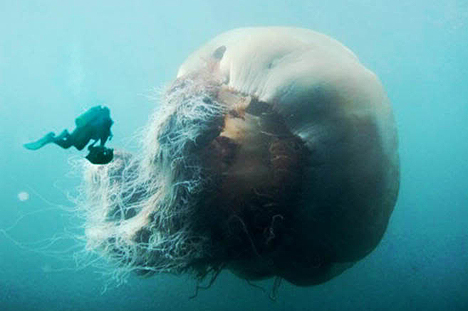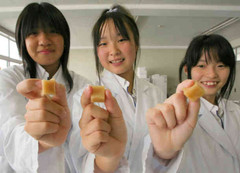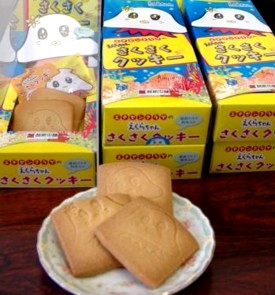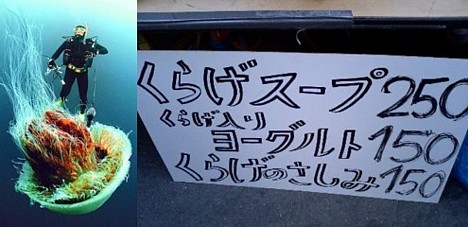In the latest move in Japan's war on giant jellyfish, high school students in the town of Obama have developed a new type of caramel candy made from the enormous sea creatures -- and they are offering it up as a snack for astronauts in space.

Nomura's jellyfish (Echizen kurage) -- If you can't beat 'em, eat 'em (in space)
The enterprising Obama Fisheries High School students have requested the Japan Aerospace Exploration Agency (JAXA) to place their chewy treat on the official menu for astronauts aboard the International Space Station. The space agency, which appears to be entertaining the proposal, is reportedly sending a representative to the school tomorrow (September 17) to evaluate the candy.
Described as having a sweet and salty flavor, the caramel's ingredients include sugar, starch syrup, and jellyfish powder, which is obtained by boiling the jellyfish down to a thick paste, drying it, and grinding it into fine particles. The most recent batch of caramel uses powder from Nomura's jellyfish snared last month in fixed fishing nets in nearby Wakasa Bay. The bay is located in Fukui prefecture, which has been among the areas hardest hit by the giant jellyfish swarms in recent years.
 The students began cooking with Nomura's jellyfish three years ago, after a NASA-designed food safety management system was installed at the school. In 2006, after the school developed a method for processing giant jellyfish into an edible powder, a local company began using it as an ingredient in their jellyfish cookies.
The students began cooking with Nomura's jellyfish three years ago, after a NASA-designed food safety management system was installed at the school. In 2006, after the school developed a method for processing giant jellyfish into an edible powder, a local company began using it as an ingredient in their jellyfish cookies.
Since then, the students have been searching for new ways to use their jellyfish powder. They are hoping to benefit from the recent raw caramel craze sweeping Japan.
[Source: Chunichi]

 As part of an
As part of an 